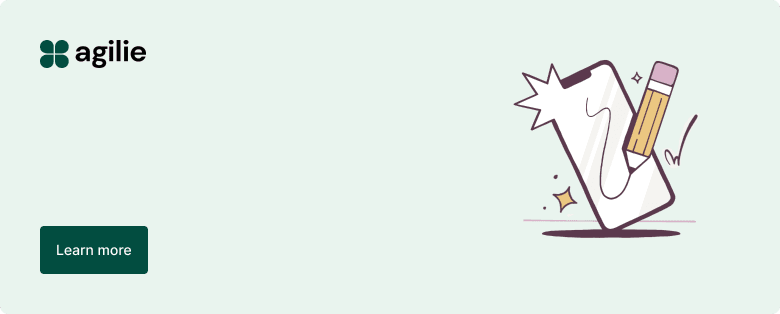Have you ever wondered whether it’s possible to create a top-notch mobile application without exceeding budget? Sure! Cost-saving is possible if applying strategic planning to UX/UI design, development, QA, and ongoing post-launch maintenance. The article discusses approaches to reduce cost to develop a mobile app without compromising its quality and performance.
-
MVP and prototyping can significantly reduce development costs, enabling developers to test ideas, detect flaws early, and avoid reworks.
-
Choosing cross-platform development is cost-preserving as compared to a native alternative, as it uses a single codebase, reducing development hours.
-
Simplification of UX/UI design can prevent scope creep and overdesign, retaining only essential features, which prevents budget overruns.
What Drives the Cost of Mobile App Development?
The central drivers of mobile app development that affect its final cost are application’s overall complexity level, feature set, team type, and timeline. Let’s discuss each in short.
App Complexity & Feature Set
App complexity refers to the overall scope of features, technical infrastructure, and third-party integrations that will affect the final mobile app development costs.
Feature Set
Feature set refers to the number of elements required to support main and nice-to-have functions:
-
Low Complexity Mobile App (MVP): will maintain only necessary functions to validate the app’s idea (e.g., registration, transaction flow - if it’s a mobile banking app).
-
Medium Complexity: includes a broader spectrum of elements, like biometric authentication for security, transaction search & filters (e.g., it can be relevant to and affect the mobile banking app development cost).
-
High Complexity: integrates advanced capabilities like AI/ML, AR/VR, geolocation, etc.
Integrations with Third-Party Services
This component refers to connecting the mobile app with the external APIs and SDKs to provide additional functionality without building from scratch.
-
Low Complexity: few or no integrations.
-
Medium Complexity: multiple APIs, including payments, maps.
-
Enterprise-Level Complexity: IoT, advanced analytics.
Backend Infrastructure
The backend handles data storage, business logic, integrations, and communication with the frontend.
-
Low: includes a basic server or Firebase.
-
Medium: includes custom database and integrates APIs to promote a moderate scalability.
-
High: is about distributed architecture and microservices to manage the increasing influx of users.
Platform
The selected platform will point out what tech stack the app development will use and determine the team involved, and timeline.
There are native and cross-platform types applied for mobile development, which we will discuss below, so stay tuned! Nevertheless, it’s worth mentioning:
-
Simple mobile apps will operate via a single platform (either iOS or Android).
-
Medium-level mobile apps will be based on cross-platform development (involving Flutter/React Native).
-
Advanced mobile applications will be built natively for different platforms.
Team Type
The mobile app development team type will critically contribute to the rise or reduction in the development costs, as it directly relates with the professionals’ location.
In-House Team
In-house team implies that the business representatives hire IT professionals to work in the office, requiring businesses to pay salaries, benefits, and office maintenance. This is the most cost-intensive option.
Outsourcing
Outsourcing is a model of cooperation when a business hires third-party IT vendors to work on software development. It’s usually a cheaper option as compared to the in-house team, but differs in location that might affect communication time, especially for reporting. Nevertheless, this challenge can be mitigated via strategic planning on communication. There are the following outsourcing types appropriate for mobile app development:
-
Offshoring: implies hiring IT specialists far from the domestic market. The approximate cost for their services can range from $25 to $60.
-
Nearshoring: is when a business hires developers from neighboring countries or those with minimal time gaps. The approximate price for their services is about $13-$65.
 Interested in outsourcing? Explore the models by engagement, contract, and location type.
Interested in outsourcing? Explore the models by engagement, contract, and location type.
Timeline
Timeline is another central determinant that affects cost for the mobile app development.
-
Extended Timeline: the long-term development requires in-depth planning as any delays can increase in development costs, especially when it comes to rework. If a business requires advanced enterprise-level applications, strategic planning must account for all essential features. The IT vendors, especially with Agile development frameworks can exceed development time, accept alterations, and deliver high value end products.
-
Expedited Timeline: can also increase the overall development costs, as rigid deadlines require crafting precision with minimal and timely-addressed errors. Strict timelines necessitate higher financial input to the developers’ salaries. Well thought-out deliverables and realistic deadlines can contribute to price mitigation without compromising product quality.

How to Reduce Cost to Develop Mobile App from Day One
Mobile app development costs can be minimized throughout and beyond the discovery phase. Strategic thinking is required to pay attention to MVP and prototyping as means to prevent costly coding reworks.
Start with an MVP, Not the Full Product
Instead of tailoring a fully-fledged product, why not start with MVP? A Minimum Viable Product is a ‘draft’ version of the future mobile application that contains only main features. This set of characteristics is about to solve clients’ pain points. MVP enables businesses to validate their practical ideas before actual coding.
How It Saves Costs
-
Minimizes Development Time: the absence of feature abundance enables developers to focus on core characteristics that minimize time and effort.
-
Reduces Cost of Development: fewer features require less coding and less design work that minimize financial input.
-
Mitigates Risks: MVP’s key purpose is to validate your product idea in the controlled live settings. If it proves solving clients’ issues, the fully-fledged product should be developed. If the idea is invalid, then, it prevents financial loss for the product of no-demand on the market.
 Interested in the cost for MVP development? Check out our article.
Interested in the cost for MVP development? Check out our article.
Rapid Prototyping & Early Feedback
Rapid prototyping is another practical option to reduce mobile app development cost. Its principal purpose is to present an interactive mockup of the application’s user interface and experience (UX/UI) prior to coding.
Prototyping is central to showcase the app’s intended flow and functionality. Then, early feedback on the app’s usability is collected based on user experience, impressions to detect areas of improvement and test assumptions whether the application can solve core client issues.
How It Saves Costs
-
Detects Flaws Early: prototyping helps detect the potential usability flaws, which will be cheaper to fix than after the actual app coding.
-
Prevents Reworks: prototyping helps validate assumptions about design choices preventing further continuous rework.
-
Emphasizes Client-Centricity: prototyping helps collecting feedback to validate the clients will actually use the app after its development and launch.
Choose the Most Cost-Effective Tech Stack
Tech stack selection in relation to whether the app is built natively or cross-platform is one of the major determinants that will affect the overall price of mobile product development.
Native vs. Cross-Platform: Budget Breakdown
Native development is about tailoring separate platform-specific applications, applying native programming languages (Swift/Objective-C for iOS and Kotlin/Java for Android). This approach delivers the best performance, scalability, and UX/UI design sophistication. However, native development requires separate teams and codebases leading to an increase in the overall development cost, time, and efforts.
By contrast, cross-platform app development applies a single codebase to craft both iOS and Android mobile applications. This approach can save up to 20%-40% (depending on the project) of initial development time and costs. That’s because it requires a single development team to complete the project.
Cross-platform mobile app development may face limitations in accessing platform-specific features to achieve the native-level performance and scalability. Yet, this approach is beneficial for MVP engineering by promoting faster launch to the early user testing environments by economizing investment.
Recommended Tools
Reaching cost savings through cross-platform development is possible by applying the following tech stack.
Flutter: using Dart programming language, Flutter is Google’s open-source UI toolkit famous for its fast development cycles and near-native performance across the platforms. Flutter is a decent option for building feature-rich apps and fast MVP launch.
React Native: is a JavaScript-based framework developed by Meta that enables developers to build cross-platform mobile apps by bridging JavaScript code with platform-specific native components.

Source: ResearchGate.
Firebase: a Google-based Backend-as-a-Service platform that enable developers focus on the app’s front-end due to its pre-built backend components:
-
Authentication.
-
Databases.
-
Cloud Storage.

Simplified UX/UI for Faster Delivery
Another essential strategy for minimizing mobile app development costs relates to simplifying UX/UI design. Instead of saturating the application with an abundance of features, it’s critical to determine a set of major features to perform central functions and cover it in clean design to maintain effective performance.
Why Clean Design Reduces Cost
A clean design not only removes excessive design aesthetical attributes but presents distinctive cost-saving advantages:
-
Reduced Development Time: minimalist and simplistic UX/UI design presents the core interactions flow, refraining from the abundance of nice-to-have features. Just principal screens, animations, and simplistic custom elements that significantly reduce development hours while accelerating the development and testing cycles.
-
Simplified Maintenance: applying a relatively simple cross-platform codebase along with simplistic UX/UI choices brings simplicity in the app’s maintenance. It’s easier to detect and fix bugs once, with changes applying to both platforms simultaneously.
-
Streamlined Loading and Improved Performance: mobile applications with minimalist UX/UI design components are lightweight, requiring less time to upload. This creates a smooth user experience, reducing the need for costly optimization services and server-side resource involvement.
Avoiding Overdesign and Scope Creep
Both ‘overdesign’ and ‘scope creep’ concepts are principal budget killers for any mobile app development projects.
Overdesign
Overdesign represents the design team’s attempt to saturate the application with unnecessary features that presumably would bring customer value. Instead, it leads to confusion, increase in development time, and raises the risk of rework.
Top Strategies to Prevent Overdesign:
-
Prioritize Usability over Impressions: instead of focusing on mesmerizing animations or visual elements, consider tailoring an intuitive user flow to perform the required action with minimal effort. Prioritize clean and simplistic design then, not to overload the flow’s performance.
-
Focus on Clients’ Feedback, not Designers’ Assumptions: collect feedback from users by involving versatile UX research methods to validate design solutions. These can help answer whether the application’s UX/UI performs all the necessary functions as intended and detect any drawbacks.
 Gain insights on how to validate the overall product idea with UX/UI research.
Gain insights on how to validate the overall product idea with UX/UI research.
Scope Creep
Scope creep is a tricky budget eater as it occurs when the project requirements expand over the initial plan. This design threat occurs mid-project when the new features are added but there is no detailed planning. Consequently, scope creep depletes budget and development time, requiring the design team to rework the design to add the new elements.
Top Strategies to Prevent Overdesign:
-
Set the Formal Change Management Process: even if business applies Agile software development lifecycle, adding new features should be formalized and documented to set clear priorities in case of required alterations.
-
Use Agile Methodology with Strict Sprints: Agile methodology or Dynamic Systems Development Method (DSDM), specifically, can mitigate design scope creep since it operates via time-boxed sprints, rigid scope control, while maintaining complex documentation.
A Mobile App Layout with Minimal UI

Source: Agilie Team.
QA Testing is a Cost Saver, Not a Cost Center
Although QA testing can require decent financial investment to provide end users with error-free functional mobile applications. Nevertheless, QA testing is a cost-saver, not a cost center if planned and integrated strategically.
Early QA + UAT Saves Time & Money
One of the software development pillars is that the later a bug is found, more financial investment will be required to get fixed. If error is found on the early development stage, it will require less time, effort, and cost to get fixed. Here are a few strategies to turn QA integration into a cost-effective solution:
Early QA
Integrating QA specialists from the very beginning of the project development, professionals can review design and code to detect potential errors before they are actually built. This approach contributes to the holistic software development saving a considerable amount of time, effort, and financial resources, as compared to bug detection after the app’s features are coded.
User Acceptance Testing (UAT)
Conducting UAT is a strategic hedge that brings an additional quality layer to the app’s performance. User Acceptance Testing involves real users to test the application’s work in the real-world setting enabling QA engineers to spot bugs and usability issues that were not seen during the internal testing. Finding and solving issues before public launch can strengthen a mobile app’s reliability after its official launch.
Leveraging Test Automation to Reduce Bugs
Integrating test automation can be a decent alternative to manual QA as it accelerates testing and minimizes human error by maintaining product quality and preventing bugs appearing in the final product. Here’s how test automation is helpful in saving costs:
Time-Preserving and Reliable Testing
Automated test scripts can perform multiple tests per short period of time, including regression testing with every update. This provides developers with real-time feedback and issue resolution while the code can still be evolving. This can preserve the debugging costs.
Reduced Maintenance Costs
Automated regression tests check the application’s new features without damaging the existing ones. Business can reduce risks of bug appearances after launch while the automated testing tools can keep validating the mobile application’s core functions. This prevents full rework and provides a solid background during deployment.

Don’t Ignore Post-Launch Costs
While development is typically the largest cost driver in mobile projects, ongoing app maintenance costs after launch also represent a significant expense that should be factored in. The product can require usability improvements, especially during an increase of user base. Or integrating new features might affect the budget considerably.
Budgeting for Maintenance and Scaling
When the mobile application is launched to the live environment, it requires constant attention to feedback and updates to improve its functionality and stay competitive on the market. Maintenance and scaling are principal factors that require post-launch costs.
Maintenance
Maintenance costs are central to keeping mobile applications secure. These include:
-
Bug Fixing.
-
App Version Updates (iOS & Android).
-
Updating Third-Party Libraries and APIs.
If not addressed, the application can experience performance crashes, lags, and worsened user experience.
Scaling
If a business does not plan a budget set aside for scaling, there is a high risk of server crashes. Costs for cloud hosting and database management are critical to planning, especially if the application covers season needs (e.g., greeting cards for Christmas). Planning scaling expenses is central to prevent performance issues.
Monitoring, Updates, and UX Optimization
The set of these activities help the mobile application preserve and evolve its competitive advantage by incorporating the following maintenance elements:
Monitoring
Monitoring is about applying analytics and crash reporting tools to check the status of app’s performance, user behavior, and errors in real time. This approach enables developers to detect and solve bugs before they become widespread via the functionality.
Updates
Updates go beyond error handling, it’s about implementing new features and responding to the clients’ feedback. Updates demonstrate the product is evolving, which stimulates users’ retention.
UX Optimization
Applying monitoring tools and conducting a post-launch UX research can uncover UX-associated pain points. This approach leads to making relevant improvements in UX/UI design to improve app’s intuitiveness and stimulate conversion rates.
Cut Coordination Overhead with a Full-Cycle Team
Finally, team selection plays a central part in reducing mobile app development costs. A full-cycle team usually works under the ‘one team, one vision’ approach, which unites all roles in sprints (developers, QA specialists, etc.) to provide early response to the potential issues. This saves costs significantly as potential problems are addressed early, avoiding expensive rework later in the process.
One Team, One Vision
The ‘one team, one vision approach’ is central in reducing overhead costs associated with teamwork, especially when it comes to outsourced cooperation. Full-cycle teams often adopt Agile frameworks to ensure cohesive collaboration across roles.
Such teams refrain from the gradual task handoff (e.g., developers hand the feature to the QA specialists), focusing on parallel cooperation. QA specialists test features in parallel with development, reducing bottlenecks and ensuring issues are identified early. This cohesive cooperation keeps the team aligned with the product vision throughout development.
Why Agilie’s Integrated Model Helps Reduce Cost
Agilie is a European IT outsourcing company specializing in from-scratch and reengineered software development, providing the full range of services:
Agilie’s integration model helps reduce mobile building costs and associated overhead with our iterative development approach. Through parallel interdepartmental workflows, specialists remain actively engaged across all stages, reviewing features, identifying issues early, and implementing timely improvements. This process speeds up the development cycles that significantly reduces time-to-market.
With active involvement of business representatives, we build trustworthy collaboration enabling clients to vocalize areas of improvement or change requests even at the late product development stages. Empathetic and in-depth collaboration prevents misinterpretation of requirements, enabling faster feature development. Consequently, the client receives a top-notch final product that meets high-quality standards within a shorter timeframe.
Summary
Structured planning from day one is a core aspect to reduce cost to develop a mobile app. Planning defines alterations, development methodology, sets directions to UI/UX design, and fosters further parallel sprint interaction between developers and QA. This helps prevent costly issue fixing and improve time-to-market. Finally, don’t ignore post-launch maintenance costs as it will directly affect user retention and the mobile app’s market competitiveness.
 Interested in crafting a top-notch mobile app? Contact us in no time. We’re always ready to help!
Interested in crafting a top-notch mobile app? Contact us in no time. We’re always ready to help!